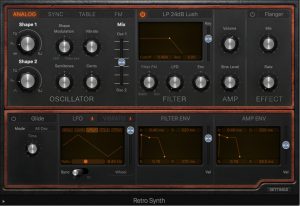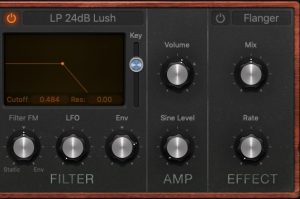If you’re like me, you may wonder, how accurate are the waveforms in LogicPro’s RetroSynth subtractive synthesis emulator. It turns out, they’re pretty accurate. I tested the sine, triangle, sawtooth, square and pulse waves. At first glance, RetroSynth seems to only offer triangle, sawtooth, square, and pulse waves (noise as well, but that’s for another day) . . .
However, if you look at the amplifier portion of the emulator, there is a knob labeled “Sine Level.” Thus to get a sine wave, you have to pull down the filter CF all the way to the bottom, and pull up the Sine Level . . .
For the test I put in a whole note with a key velocity of 100 for each waveform. I used the note A1 (middle C=C4), resulting in a 55 Hz tone. You can see and hear the results in this video . . .
Note however that there are some weird artifacts during the square wave, which come from data compression.
Those of you who know your waveforms know that a sine tone is a pure tone that has no overtones (harmonics). A triangle wave is a sum of all the odd harmonics, where the fundamental is harmonic 1, with the amplitude of each partial is 1/(n squared). A sawtooth wave features all harmonics with an amplitude of 1/n. A square wave includes all the odd numbered harmonics with the amplitude of 1/n. A pulse wave is a variable square wave, and the harmonic content is reliant upon the width of the pulse. I used a graphic equalizer in Logic Pro to display the harmonic content of each waveform.


